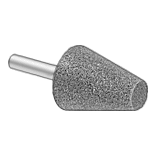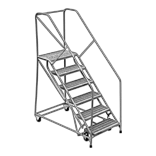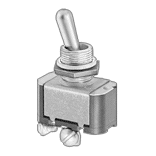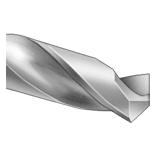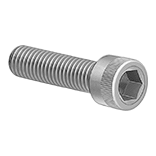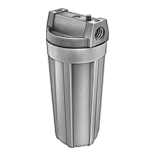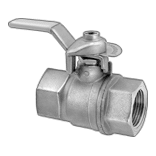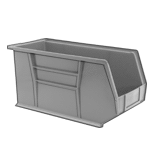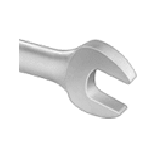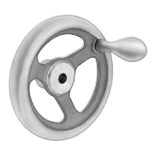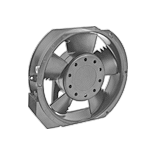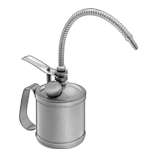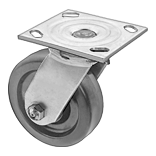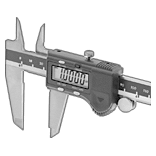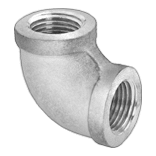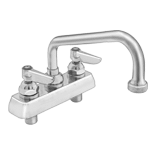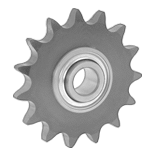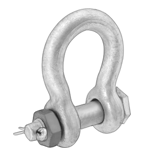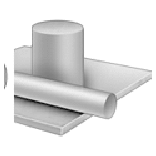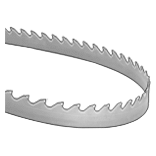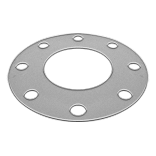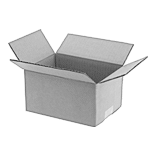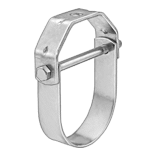Smooth-Cut Circular Saw Blades for Wood

With more than 1.5 times more teeth than a standard circular saw blade, these blades make smooth cuts across the wood grain for a finish that needs minimal sanding. Use them on wood, plywood, and particleboard. They make both straight and plunge cuts, so they can cut lumber down to size and slice through material that’s already installed.
Blades with anti-vibration vents limit shaking for straight, accurate cuts and also reduce cutting noise. They have a coating that resists heat buildup when cutting, which helps keep them sharp. They stay cool as you cut, so sawdust won’t stick to them as easily, and they won’t burn your wood.
Warning: Use blades that have a greater rpm rating than the no-load rpm of your tool.
Material | |||||||||||
|---|---|---|---|---|---|---|---|---|---|---|---|
| Arbor Hole Size | Arbor Hole Shape | Number of Teeth | Width of Cut | Max. Speed, rpm | Hook Angle | Tooth | Body | Cut Type | Features | Each | |
9" Dia. | |||||||||||
| 5/8" | Round | 72 | 0.116" | 8,000 | 10° | Carbide | Steel | Across Grain | Anti-Vibration Vents | 000000000 | 000000 |
Smooth-Cut Miter, Chop, and Table Saw Blades for Wood

With a large number of teeth, these blades make smooth cuts across the wood grain for a finish that needs minimal sanding. To keep your cuts straight and accurate, they have laser-cut anti-vibration vents that add stability. The vents also dissipate heat to prevent dulling. Use these blades on wood, plywood, and particleboard. They’re good for applications such as making long, accurate cuts on a sheet of plywood or cutting bevels and angles into wood framing to make a door or window.
When choosing a blade, you’ll want to keep in mind the number of teeth and width of cut. Choose more teeth for cutting across the grain; choose fewer teeth for cutting with the grain (ripping) or through thicker materials. A narrower cut width makes faster cuts with minimal material loss; a wider cut width increases stability for straighter cuts.
Blades with an aluminum-alloy-coated body further reduce heat buildup when cutting. This protects your material from burning and keeps dust from sticking to your blade and gumming it up. The coating also prevents the blade from dulling.
Warning: Use blades that have a greater rpm rating than the no-load rpm of your tool.
Material | |||||||||||
|---|---|---|---|---|---|---|---|---|---|---|---|
| Arbor Hole Size | Arbor Hole Shape | Number of Teeth | Width of Cut | Max. Speed, rpm | Hook Angle | Tooth | Body | Cut Type | Features | Each | |
12" Dia. | |||||||||||
| 1" | Round | 72 | 0.126" | 6,000 | 10° | Titanium Cobalt Carbide-Tipped Steel | Aluminum-Alloy-Coated Steel | Across Grain | Anti-Vibration Vents | 0000000 | 0000000 |
Miter, Chop, and Table Saw Blades for Plastic

Produce smooth cuts in plastic materials including polycarbonate, polyurethane, PVC, and acrylic with the carbide-tipped teeth on these blades. Sharpen them if they become dull. Choose blades with more teeth for thin, brittle plastic; choose blades with fewer teeth for thicker, softer plastic. Blades with a narrower width of cut make faster cuts with less material loss.
Material | |||||||||
|---|---|---|---|---|---|---|---|---|---|
| Arbor Hole Size | Arbor Hole Shape | Number of Teeth | Width of Cut | Max. Speed, rpm | Hook Angle | Tooth | Body | Each | |
10" Dia. | |||||||||
| 5/8" | Round | 72 | 0.102" | 7,000 | -3° | Carbide-Tipped Steel | Steel | 0000000 | 000000 |
Miter and Chop Saw Blades for Aluminum

Teeth are carbide tipped and designed to push chips away from the blade to prevent clogging and produce smooth cuts in aluminum sheets, tubing, and T-slotted framing. They’re good for applications such as cutting aluminum bars to size or cutting bevels and angles into aluminum framing to make a window.
When choosing a blade, you'll want to keep in mind the number of teeth and the width of the cut. More teeth will give you a smoother cut; fewer teeth will give you a faster cut. A narrower cut width makes faster cuts with minimal material loss; a wider cut width increases stability for straighter cuts.
Warning: Use blades that have a greater rpm rating than the no-load rpm of your saw.
For technical drawings and 3-D models, click on a part number.
Material | |||||||||
|---|---|---|---|---|---|---|---|---|---|
| Arbor Hole Size | Arbor Hole Shape | Number of Teeth | Width of Cut | Max. Speed, rpm | Hook Angle | Tooth | Body | Each | |
10" Dia. | |||||||||
| 5/8" | Round | 72 | 0.093" | 5,200 | 7° | Carbide-Tipped Steel | Steel | 0000000 | 000000 |
Miter and Chop Saw Blades for Steel

Make fast, clean cuts in steel sheets, angle iron, rebar, and pipe with the carbide teeth on these blades. Choose blades with more teeth for a smoother cut.
For technical drawings and 3-D models, click on a part number.
Material | |||||||||
|---|---|---|---|---|---|---|---|---|---|
| Arbor Hole Size | Arbor Hole Shape | Number of Teeth | Width of Cut | Max. Speed, rpm | Hook Angle | Tooth | Body | Each | |
14" Dia. | |||||||||
| 1" | Round | 72 | 0.102" | 1,600 | 0° | Carbide-Tipped Steel | Steel | 0000000 | 0000000 |
Miter and Chop Saw Blades for Steel and Stainless Steel

Spend less time on blade changes when cutting steel and stainless steel. These blades have teeth that are a blend of ceramic and carbide, so they cut both materials and last five times longer than blades with standard carbide teeth. An aluminum alloy coating on their body resists heat buildup to prevent them from dulling and getting gummed up with metal shards. Since they stay cool, they won’t accidentally harden the edge that you’re cutting. To keep your cuts straight and accurate, they have anti-vibration vents that limit shaking. The vents further reduce heat buildup to prevent dulling. Use these blades for applications such as cutting steel bars to size or cutting bevels and angles into stainless steel framing to make a window.
Choose blades with more teeth for a smoother cut; choose blades with fewer teeth for a faster cut and for cutting thicker materials.
Warning: Use blades that have a greater rpm rating than the no-load rpm of your tool.
For technical drawings and 3-D models, click on a part number.
Material | ||||||||||
|---|---|---|---|---|---|---|---|---|---|---|
| Arbor Hole Size | Arbor Hole Shape | Number of Teeth | Width of Cut | Max. Speed, rpm | Hook Angle | Tooth | Body | Features | Each | |
14" Dia. | ||||||||||
| 1" | Round | 72 | 0.083" | 1,800 | 0° | Ceramic/Carbide Blend | Aluminum-Alloy-Coated Steel | Anti-Vibration Vents | 0000000 | 000000 |
Multipurpose Miter and Chop Saw Blades

Cut through metal, plastic, and other materials without having to change blades. These blades have carbide-tipped teeth that make clean cuts through plastic while being durable enough to make burr-free cuts through metal.
When choosing a blade, you'll want to keep in mind the number of teeth and the width of the cut. Choose more teeth for a smoother cut; choose fewer teeth for a faster cut and for cutting thicker materials. A narrower cut width makes faster cuts with minimal material loss; a wider cut width increases stability for straighter cuts.
Blades with an aluminum-alloy-coated body resist heat buildup when cutting, so they stay sharp and don’t get gummed up with dust and metal shards. Since they stay cool, they won’t accidentally burn or harden the edge that you’re cutting. These blades also have anti-vibration vents that limit shaking for straight, accurate cuts. They further reduce heat buildup to prevent dulling.
Warning: Use blades that have a greater rpm rating than the no-load rpm of your tool.
For technical drawings and 3-D models, click on a part number.
Material | |||||||||||
|---|---|---|---|---|---|---|---|---|---|---|---|
| Arbor Hole Size | Arbor Hole Shape | Number of Teeth | Width of Cut | Max. Speed, rpm | Hook Angle | Tooth | Body | For Use On | Features | Each | |
12" Dia. | |||||||||||
| 1" | Round | 72 | 0.11" | 5,000 | -5° | Carbide-Tipped Steel | Aluminum-Alloy-Coated Steel | Aluminum, Brass, Copper, Fiberglass, Plastic | Anti-Vibration Vents | 0000000 | 000000 |
